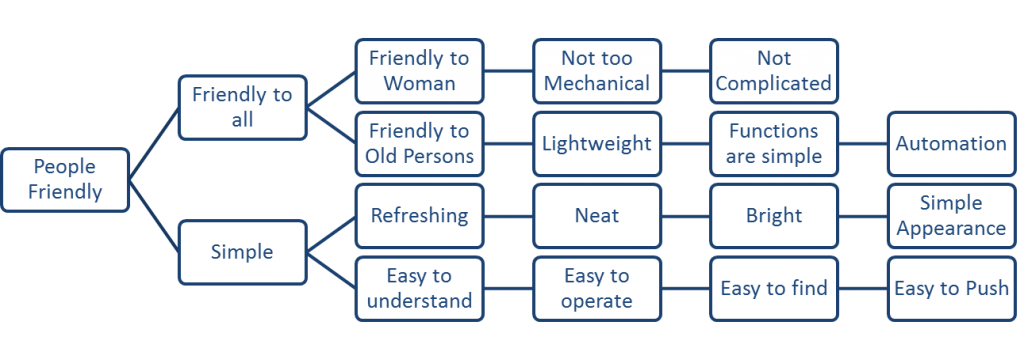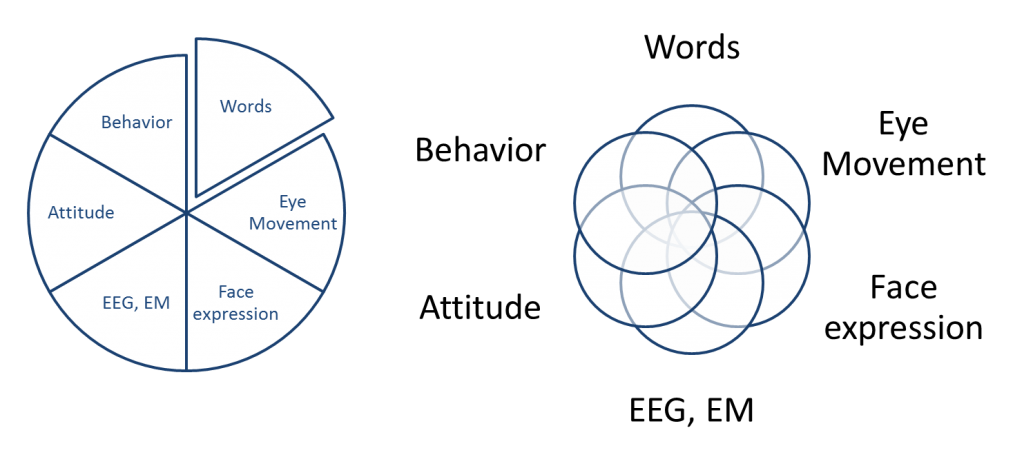Kansei/Affective Engineering is essentially the human side of product development. We are attempting to take customer’s feelings and convert them into our design. It is very much aligned with User Experience Design but more often used in product development firms and engineering departments versus Design firms and Web applications. More background is provided about the subject in my blog post, Kansei Engineering the Unknown Discipline.
Kansei/Affective Engineering is defined as the technology of translating the consumer’s Kansei into the product design domain (Nagamachi 1995,1999, 2005,2010). Most of the published material on this subject is in the two volume set Innovations of Kansei Engineering and Kansei Engineering, 2 Volume Set: Kansei/Affective Engineering (Industrial Innovation Series).
Some of the concepts are very simple and similar to finding root cause of a problem for example. You may take a product development project and put it into a method called a Zero-Order Kansei Concept. In this concept, they drill down from the general subject matter to a more specific one. In the example in one of the above books, they use people friendly as a Zero-Order Concept.
 As described above, when we break down the product concept further and further, which at first was very general and vague, into lower-order concepts, we will reach a stage where the physical design characteristics will appear without us even realizing it. At this point, we can go on to decide the physical characteristics such as size, appearance design, color, and function.
As described above, when we break down the product concept further and further, which at first was very general and vague, into lower-order concepts, we will reach a stage where the physical design characteristics will appear without us even realizing it. At this point, we can go on to decide the physical characteristics such as size, appearance design, color, and function.
Though we drill down to very small details, one of the main components of Kansei thinking is that little is done in isolation. The Kansei Engineer views the process and expects to find influence between the components. The view is not one of a pie depicted below on the left rather similar to a Venn diagram where components will overlap and influence the other. How much influence and overlapping occurs is called the degree of contribution (I love that term). I liken this to engineering working on different components of the project but maintaining an overall view of the project. In Lean 3P, they have moved away from stage gates to a more event style process where people from the individual disciplines and projects gather and synthesize their efforts.
 The entire concept of Kansei Engineering is not as simple as the above examples. There are many different components to the process; Quality Functional Deployment, Multivariate Analysis, FMEA and Affinity Diagrams are commonly used. I have seen reference to where Kansei Engineering is the “emotional” side of TRIZ and the engineering side of NLP (Neuro-Linguistic Programming). There are limited examples of its use in the service area though I see little reason that it would not apply. I like the methodology especially when I see references to the “Root Cause of Feelings” (That seems an area that could go deeper than 5 Whys).
The entire concept of Kansei Engineering is not as simple as the above examples. There are many different components to the process; Quality Functional Deployment, Multivariate Analysis, FMEA and Affinity Diagrams are commonly used. I have seen reference to where Kansei Engineering is the “emotional” side of TRIZ and the engineering side of NLP (Neuro-Linguistic Programming). There are limited examples of its use in the service area though I see little reason that it would not apply. I like the methodology especially when I see references to the “Root Cause of Feelings” (That seems an area that could go deeper than 5 Whys).
Is Kansei Engineering worth investigating more?
Are there service type examples out there?
